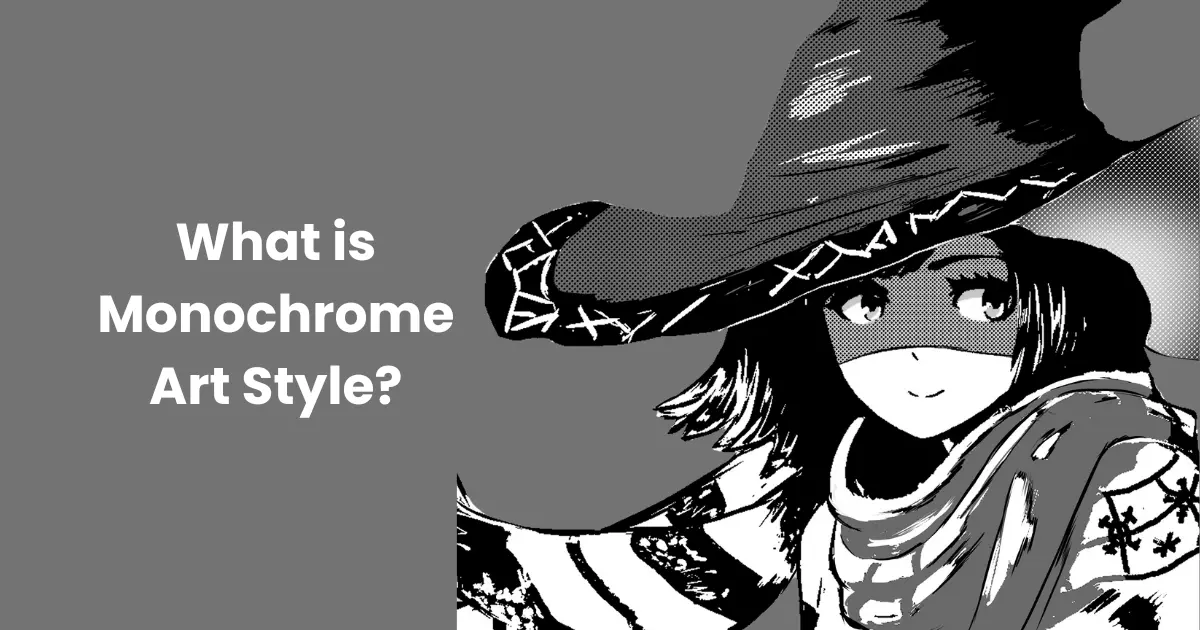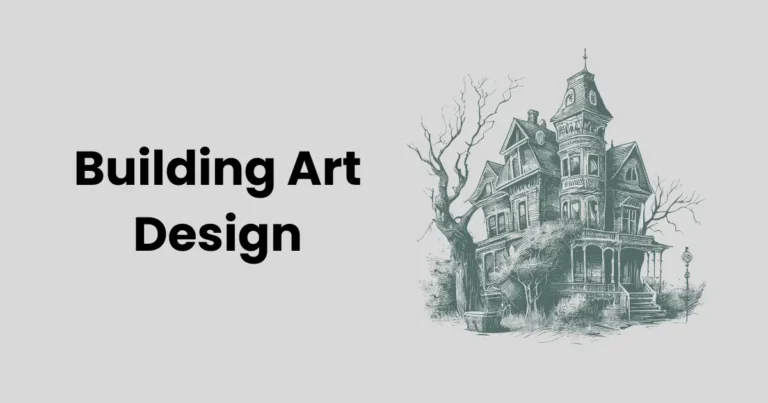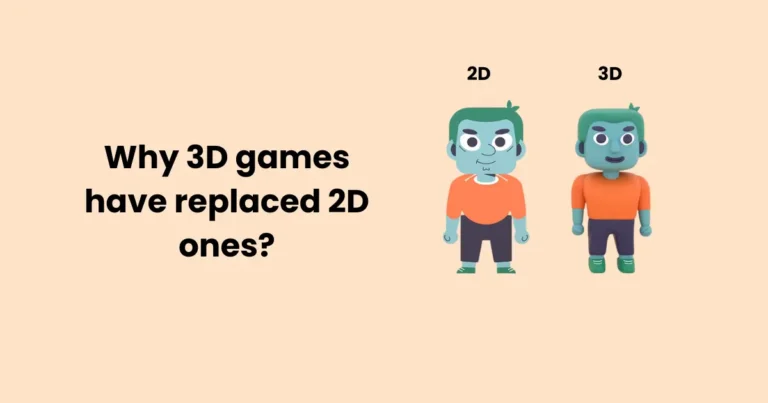What is Monochrome Art Style | Techniques and tips to learn grayscale in 2025

Contents
- 1 Characteristics of Monochrome Art
- 2 Why Choose Monochrome Art Style?
- 3 Famous Monochrome Artworks and Artists
- 4 Techniques in Monochrome Art
- 5 Applications of Monochrome Art Style
- 5.1 1. Fine Art
- 5.2 2. Photography
- 5.3 3. Graphic Design
- 5.4 4. Fashion and Textile Design
- 5.5 5. Interior Design
- 5.6 6. Illustration and Digital Art
- 5.7 7. Marketing and Advertising
- 5.8 8. Film and Cinema
- 5.9 9. Education and Training
- 5.10 10. Tattoo Art
- 5.11 11. Cultural and Traditional Art
- 5.12 12. Concept Art and Storyboarding
- 6 Tips for Creating Monochrome Art
- 7 Challenges in Monochrome Art
The monochrome art style is a timeless approach that celebrates the beauty of simplicity through the use of a single color or a limited range of tones. Rooted in minimalism, this art form has captivated artists and audiences for centuries with its ability to convey depth, emotion, and intricate detail without the need for vibrant hues. From traditional ink drawings to modern digital illustrations, the monochrome art style continues to be a versatile and powerful medium in creative expression.
Historically, the monochrome art style traces its origins back to ancient times when artists used natural pigments and materials to create impactful works. Whether it’s the elegant black-and-white photography of the 20th century or the tonal masterpieces of abstract painters, monochrome art demonstrates that sometimes, less truly is more.
In this article, we’ll explore the defining characteristics, techniques, and applications of the monochrome art style, offering insights into why it remains a popular choice among artists and designers today. If you’re looking to master this unique art form, understanding its rich history and creative potential is the perfect starting point.
Characteristics of Monochrome Art
The monochrome art style is distinguished by several unique features that make it both captivating and versatile. By focusing on tonal variations within a single color or a limited palette, this style creates a visual language that emphasizes form, texture, and composition. Below are the defining characteristics of the monochrome art style:

1. Limited Color Palette
At its core, the monochrome art style relies on the use of one color, often paired with its lighter and darker shades. This limited palette simplifies the visual experience, drawing attention to the subject’s shapes and details rather than relying on multiple colors to convey meaning.
2. Focus on Tonal Variation
Tonal contrast is a hallmark of the monochrome art style. Artists skillfully manipulate light and shadow to create depth, dimension, and mood. The interplay between highlights and shadows ensures that even without color, the artwork feels dynamic and full of life.
3. Emphasis on Texture and Detail
The lack of varied colors in the monochrome art style places a stronger emphasis on texture and intricate details. Whether it’s the grain of charcoal on paper or the smooth finish of digital lines, texture becomes a vital component in conveying emotion and storytelling.
4. Use of Negative Space
Negative space is often more prominent in monochrome works. Artists use the contrast between the subject and the empty areas to enhance the composition and balance of the piece. This strategic use of space often adds elegance and simplicity to the artwork.
5. Emotional Impact
The monochrome art style has a remarkable ability to evoke strong emotions. Without the distraction of multiple colors, viewers can connect more deeply with the underlying themes and mood of the artwork, whether it’s somber, dramatic, or serene.
6. Versatility Across Mediums
From traditional media like pencil, charcoal, and ink to modern digital tools, the monochrome art style adapts effortlessly across different mediums. Its simplicity and universal appeal make it a favorite among artists working in diverse fields.
The monochrome art style proves that creativity isn’t about the number of colors an artist uses but about how they use their chosen medium to its fullest potential. This minimalist approach continues to inspire artists and captivate audiences worldwide.
Why Choose Monochrome Art Style?
The monochrome art style is more than just a minimalist aesthetic—it’s a deliberate choice that offers unique advantages for both artists and audiences. By focusing on a single color or limited palette, this style creates a compelling visual impact that is both timeless and versatile. Here’s why you should consider embracing the monochrome art style:

1. Emotional Impact
The simplicity of the monochrome art style allows for a stronger focus on emotion and mood. By removing the distraction of multiple colors, it emphasizes tone, contrast, and composition, enabling viewers to connect more deeply with the artwork. Whether it’s the drama of black-and-white photography or the serenity of a single-toned painting, monochrome art communicates powerful emotions.
2. Minimalistic Aesthetics
The elegance of minimalism lies at the heart of the monochrome art style. Its clean and uncluttered visuals appeal to those who value simplicity. This style strips away the unnecessary, leaving behind only the essence of the subject, which can often lead to a more profound appreciation of the artwork.
3. Versatility Across Mediums
One of the greatest strengths of the monochrome art style is its adaptability. Whether you’re working with charcoal, ink, photography, or digital illustration, this approach translates beautifully across all mediums. Its simplicity allows artists to experiment and innovate without being constrained by complex color schemes.
4. Highlighting Form and Texture
By eliminating color, the monochrome art style shifts the focus to other elements, such as shape, texture, and detail. This makes it an excellent choice for artists who want to emphasize the physical qualities of their subject or the intricacy of their technique.
5. Timeless Appeal
The monochrome art style has a timeless quality that never goes out of fashion. It has been a staple in art history, from the ink paintings of ancient China to contemporary black-and-white photography. Its classic look ensures that monochrome artworks remain relevant and appreciated through generations.
6. Cost-Effective and Beginner-Friendly
For artists just starting out, the monochrome art style can be a practical and budget-friendly choice. Using fewer materials—such as a single pencil or a limited palette—makes it easier and less expensive to experiment and learn without sacrificing the quality of the artwork.
7. Universal Appeal
Monochrome art transcends cultural and linguistic barriers. Its simplicity speaks to everyone, making it a universally understood and appreciated art form. This makes it particularly effective in design, marketing, and visual storytelling.
By choosing the monochrome art style, you open the door to creating impactful, versatile, and timeless artworks that resonate deeply with viewers. It’s a style that proves creativity doesn’t require complexity—just a mastery of tone, texture, and form.
Famous Monochrome Artworks and Artists
The monochrome art style has left an indelible mark on the art world, inspiring countless artists and producing iconic masterpieces. By focusing on tonal variation and simplicity, these works transcend the limitations of color to create powerful visual statements. Here’s a look at some famous monochrome artworks and the artists behind them:

1. Black and White Photography
- Ansel Adams: Renowned for his dramatic black-and-white landscapes of the American West, Ansel Adams mastered tonal contrast to capture the grandeur of nature. His works, such as Moonrise, Hernandez, New Mexico, showcase the emotional depth achievable with monochrome photography.
- Henri Cartier-Bresson: A pioneer of street photography, Cartier-Bresson’s black-and-white images capture candid moments of human life with a focus on composition and storytelling.
2. Abstract Monochrome Paintings
- Kazimir Malevich: Malevich’s Black Square (1915) is one of the most iconic monochrome artworks. This abstract piece, composed of a black square on a white background, symbolizes the reduction of art to its purest form.
- Yves Klein: Known for his signature blue monochrome paintings, Yves Klein created a series of artworks using a vibrant ultramarine pigment, which became known as International Klein Blue (IKB). Although primarily monochromatic, his works evoke a deep sense of infinity and spirituality.
3. Ink and Wash Paintings
- Sesshū Tōyō: A master of Japanese ink painting, Sesshū’s monochrome landscapes are celebrated for their minimalism and expressive brushwork. His works embody the Zen philosophy of simplicity and natural beauty.
- Shitao: A Chinese artist of the Qing dynasty, Shitao’s ink paintings reflect spontaneity and a profound understanding of tonal variation, making them timeless examples of monochrome art.
4. Contemporary Monochrome Art
- Robert Ryman: Often associated with minimalist art, Ryman’s works are predominantly white-on-white paintings. By exploring texture and subtle tonal differences, he challenges traditional perceptions of color and form.
- Ellsworth Kelly: Kelly’s monochrome panels, such as Black Red-Blue (1953), emphasize the power of simple geometric shapes and bold single colors.
5. Monochrome in Sculpture
- Constantin Brâncuși: The simplicity of Brâncuși’s sculptures, such as Bird in Space, aligns with the principles of the monochrome art style. His works emphasize form and material over embellishment.
- Barbara Hepworth: Hepworth’s smooth, monochromatic sculptures in materials like marble and bronze highlight the purity of shape and texture.
The monochrome art style has been embraced across eras and mediums, demonstrating its enduring appeal and creative potential. These artists and their works prove that the absence of color can be just as expressive and impactful as the most vibrant palette.
Techniques in Monochrome Art
Creating impactful works in the monochrome art style requires mastery of various techniques that focus on tone, texture, and composition. By working within the constraints of a single color or limited palette, artists can explore creative possibilities and evoke strong emotions. Here are the key techniques used in monochrome art:

1. Tonal Shading and Gradation
Tonal shading involves using a range of light and dark values within the chosen color to create depth and dimension.
- Technique: Gradually blend shades to produce smooth transitions, or use stark contrasts for dramatic effects.
- Tools: Pencils, charcoal, ink, or digital brushes can be used to achieve various tonal effects.
2. Negative Space Utilization
Negative space refers to the uncolored or empty areas of a composition that enhance the subject’s form.
- Technique: Design the artwork so that the negative space complements the focal point, balancing the overall composition.
- Example: Traditional ink paintings often use large areas of blank paper to create a minimalist aesthetic.
3. Hatching and Cross-Hatching
These techniques rely on lines to create texture and tonal variation.
- Hatching: Parallel lines are used to create shadow and texture.
- Cross-Hatching: Intersecting lines build up darker areas and add depth.
- Tools: Pens, pencils, and digital styluses are commonly used.
4. Dry Brush Technique
This method involves using a brush with minimal pigment to create rough, textured strokes.
- Technique: Apply paint lightly to emphasize texture and create a sense of movement.
- Application: Ideal for landscapes, abstract art, and adding dynamic details.
5. Ink Wash and Watercolor
Monochrome ink wash and watercolor painting use diluted pigment to achieve tonal variations.
- Technique: Layer washes of varying intensity to build depth and contrast.
- Effect: Creates a soft, flowing appearance, perfect for landscapes and portraits.
6. Contrast and Highlights
Contrast is vital in the monochrome art style to define shapes and create visual interest.
- Technique: Combine deep shadows with bright highlights to enhance focal points.
- Tools: Use erasers for highlights in pencil drawings or white paint for accents in darker compositions.
7. Texture Creation
Texture adds dimension and realism to monochrome artworks.
- Technique: Use stippling, splattering, or layering to mimic natural textures like skin, wood, or stone.
- Tools: Sponges, brushes, and specialized tools like palette knives are helpful.
8. Digital Techniques
Modern artists often create monochrome art using digital tools.
- Technique: Use software features like gradient tools, opacity adjustments, and layers to manipulate tones.
- Advantage: Allows for precision and easy experimentation.
9. Minimalist Composition
A strong composition is critical in monochrome art, as the lack of color places greater emphasis on design.
- Technique: Focus on symmetry, balance, and leading lines to guide the viewer’s eye.
- Example: Abstract monochrome art often utilizes geometric shapes for a clean, minimalist look.
10. Layering and Blending
Layering involves building up tones gradually, while blending ensures smooth transitions between shades.
- Technique: Apply multiple layers of the same color, blending each layer for seamless tonal shifts.
- Tools: Blending stumps, brushes, or digital smudge tools are effective.
By mastering these techniques, artists working in the monochrome art style can create striking, expressive, and memorable works that resonate deeply with viewers. The style’s reliance on tone, texture, and composition ensures that every stroke or line carries significance.
Applications of Monochrome Art Style
The monochrome art style is highly versatile and finds applications across various fields and industries. Its simplicity and emotional depth make it a popular choice for artistic expression, design, and communication. Here are some of the key applications of the monochrome art style:

1. Fine Art
Monochrome art is a staple in the world of fine art, offering artists a timeless medium to explore concepts, emotions, and forms.
- Examples: Black-and-white paintings, ink wash landscapes, and abstract monochrome canvases.
- Purpose: To evoke strong emotional responses and highlight contrasts in tone and texture.
2. Photography
Black-and-white photography is one of the most celebrated forms of monochrome art.
- Application: Used for portraiture, landscapes, and documentary photography to emphasize light, shadow, and texture.
- Effect: Creates a timeless, dramatic, and elegant aesthetic.
3. Graphic Design
The monochrome art style is widely used in graphic design for its clean and modern appeal.
- Application: Logo design, branding, and website layouts often use monochrome palettes for a sleek, professional look.
- Advantage: Simplifies visual elements while maintaining a high level of impact.
4. Fashion and Textile Design
Monochrome patterns and prints are popular in the fashion industry.
- Examples: Black-and-white stripes, checks, and minimalist designs.
- Purpose: To create bold, timeless clothing and accessories that never go out of style.
5. Interior Design
The monochrome aesthetic is a cornerstone of modern and minimalist interior design.
- Application: Used in furniture, wall art, and decor to create sophisticated and harmonious spaces.
- Effect: Enhances lighting and space by focusing on contrast and clean lines.
6. Illustration and Digital Art
In illustration, the monochrome art style is often used for book covers, editorial art, and concept sketches.
- Application: Digital artists use monochrome for initial design concepts or to create dramatic final pieces.
- Advantage: Simplifies storytelling by focusing on form and composition.
7. Marketing and Advertising
Monochrome visuals are effective in grabbing attention and conveying a clear message.
- Application: Used in print and digital campaigns, posters, and product packaging to create an eye-catching and memorable look.
- Effect: Exudes sophistication and modernity, appealing to diverse audiences.
8. Film and Cinema
Monochrome visuals are a powerful storytelling tool in filmmaking.
- Examples: Black-and-white films like Schindler’s List and The Artist use monochrome to set mood and tone.
- Purpose: Creates a sense of nostalgia or dramatic intensity.
9. Education and Training
Monochrome art is frequently used in art education to teach foundational skills.
- Application: Students learn shading, contrast, and composition without the complexity of color theory.
- Advantage: Builds a strong understanding of light, shadow, and texture.
10. Tattoo Art
Monochrome designs are popular in tattoo artistry for their striking and timeless appeal.
- Style: Black-and-gray tattoos emphasize intricate details and shading.
- Effect: Creates a bold and elegant look that stands out.
11. Cultural and Traditional Art
Many traditional art forms rely on monochrome techniques.
- Examples: Japanese sumi-e ink paintings, Chinese calligraphy, and African monochromatic patterns.
- Purpose: To convey cultural narratives and spiritual themes.
12. Concept Art and Storyboarding
Monochrome art is widely used in concept art and pre-production for films and games.
- Application: Helps visualize ideas and plan compositions without the distraction of color.
- Advantage: Streamlines the creative process by focusing on form and layout.
The monochrome art style is a testament to the idea that simplicity can be both impactful and versatile. Its applications across diverse fields demonstrate its timeless appeal and enduring relevance in creative industries.
Tips for Creating Monochrome Art
Creating impactful monochrome art requires skillful handling of tone, texture, and composition. By focusing on a single color or shade, artists can produce stunning pieces that emphasize contrast and simplicity. Here are some essential tips to help you master the monochrome art style:

1. Focus on Contrast
Contrast is crucial in monochrome art, as it defines the shapes and elements within your composition.
- Tip: Use stark contrasts between light and dark shades to create visual interest and depth. Play with light and shadow to add dimensionality to your artwork.
- Example: In a black-and-white portrait, use deep shadows for dramatic effect, and place bright highlights where light naturally hits the subject.
2. Experiment with Different Textures
Monochrome art relies heavily on texture to add richness and depth, especially when using only one color or tone.
- Tip: Explore different textures like smooth, rough, stippled, or cross-hatched to enhance your composition.
- Example: For an ink drawing, try a combination of hatching and stippling to convey varied textures and create the illusion of depth.
3. Utilize Negative Space Effectively
Negative space is just as important in monochrome art as the drawn or painted areas. It can balance your composition and highlight the focal point.
- Tip: Leave areas of your artwork uncluttered to create a sense of breathing room. Let the negative space complement the subject rather than detract from it.
- Example: In minimalistic ink landscapes, leaving large portions of white space can add elegance and help focus attention on key details.
4. Master Gradation
Creating smooth gradations of tone from light to dark is key in producing monochrome artwork that feels balanced and harmonious.
- Tip: Use blending techniques like smooth gradients to transition between different tones without harsh lines.
- Example: In a charcoal portrait, gradually build up the shading to create soft transitions between skin tones and shadows.
5. Embrace Simplicity
Monochrome art thrives on simplicity. You don’t need a complex color palette to create powerful artwork.
- Tip: Focus on essential elements—line, shape, and texture—without overcrowding the composition.
- Example: In a black-and-white abstract painting, use minimal geometric shapes and leave much of the canvas empty to keep the piece clean and focused.
By focusing on these tips, you can create monochrome art that stands out, draws attention, and evokes emotion—all without the need for a colorful palette. The key is in how you use the various shades, textures, and elements within your chosen color.
Challenges in Monochrome Art
While the monochrome art style offers a unique way to explore contrast, emotion, and form, it comes with its own set of challenges. Artists who work with a single color or shade must be creative and skilled in overcoming limitations related to tone, texture, and depth. Below are some of the common challenges faced when creating monochrome art:
1. Limited Color Palette
One of the most obvious challenges in monochrome art is the absence of color.
- Challenge: Working with just one color or shade can feel restrictive, as artists are often accustomed to the freedom that a broad color palette provides.
- Solution: Artists can focus on exploring different shades, tones, and textures within the chosen color. This allows them to create depth and visual interest even without using multiple colors. Experimenting with gradients and varying contrasts can also provide a sense of richness.
2. Creating Depth and Dimension
In monochrome art, the absence of color can make it difficult to represent depth and dimensionality.
- Challenge: Without the ability to use color contrasts, it can be harder to create the illusion of 3D forms, especially in complex compositions.
- Solution: Artists can rely heavily on light, shadow, and texture to create depth. Techniques like shading, blending, and using varied tones (light, medium, and dark) help in building a sense of volume and space. Layering strokes and creating gradations can also enhance the perception of depth.
3. Emphasizing Emotion Without Color
Color often plays a significant role in evoking emotional responses in art.
- Challenge: Without the emotional power of color, it can be difficult to convey mood and feeling through monochrome art alone.
- Solution: Artists can focus on the composition, contrast, and texture to communicate emotion. For instance, a dark and heavy use of black can convey a somber mood, while lighter tones may suggest calmness or purity. Additionally, the subject matter and lines within the artwork play a critical role in setting the tone.
4. Visual Monotony
Another challenge in monochrome art is avoiding monotony or a flat visual experience.
- Challenge: Since the piece relies on one color, it’s easy for the artwork to feel repetitive or visually dull.
- Solution: Artists should vary the techniques they use, such as incorporating different textures (e.g., rough, smooth, dotted, or cross-hatched). Layering these elements can create complexity and keep the viewer’s eye engaged. Alternating between solid areas of tone and lighter, open spaces also helps avoid monotony.
5. Balancing Contrast and Harmony
Achieving a balance between contrast and harmony is critical when working with a single color.
- Challenge: Too much contrast can make the artwork feel disjointed, while too little contrast can result in a flat, lifeless piece.
- Solution: It’s important to find the right balance between light and dark tones. Artists should experiment with gradients, midtones, and subtle variations in shading to maintain visual harmony while still emphasizing key elements.
While monochrome art comes with its challenges, it also offers incredible opportunities for creative expression. By embracing the limitations of a single color and exploring the potential of contrast, texture, and composition, artists can create compelling, dynamic pieces that speak volumes. Overcoming these challenges takes practice, but the rewards of mastering this art style are immense.
Conclusion
In conclusion, monochrome art is a powerful medium that allows artists to explore the full potential of contrast, tone, and texture without the distraction of color. Although it presents several challenges, such as creating depth and avoiding monotony, it also offers unique opportunities for artistic expression. By focusing on light, shadow, and composition, artists can create visually striking and emotionally impactful works that resonate with viewers. Monochrome art encourages creativity and pushes the boundaries of traditional artistic practices, allowing for experimentation and personal expression within a simplified framework.
Ultimately, the beauty of monochrome art style lies in its simplicity and the way it compels both artists and viewers to engage more deeply with the fundamental elements of art. Whether you’re using black and white, shades of gray, or a single color, this style allows for endless experimentation and a fresh perspective on subjects. As artists continue to embrace monochrome techniques, this art form will continue to evolve, offering innovative ways to communicate ideas, emotions, and stories with powerful visual clarity.






